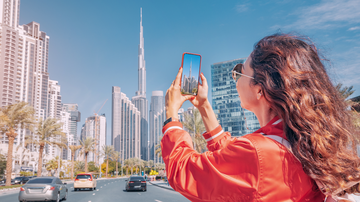In an era where data is currency and attention spans are fleeting; successful brands aren't just targeting consumers—they're anticipating them. From personalized ads that seem to read your mind to campaigns timed perfectly to your daily routine, marketers are using behavioral insights to shape decisions before consumers even realize they're making them.
By combining data, psychology and evolving digital platforms, brands are now learning not only who their customers are—but what they'll do next. Understanding how people think, feel, and act has become the most powerful tool in marketing —and it's changing the game entirely.
At the University of New Mexico's Anderson School of Management, Assistant Professor Hyunsang Son (Son) is using machine learning technologies to explore how marketers can use social media data to their advantage. His recent research focuses on influencer marketing in the tourism industry, using Instagram as a case study to determine what kinds of videos drive the most user engagement.
The study analyzed over 4,000 Instagram videos from the top 40 travel influencers using a technique known as the transfer learning approach—a model used by tech giants like Google and Facebook. This method allows researchers to extract features from videos, including the video length, sentiment, facial expressions, color saturation, and brightness.

"I can actually quantify the exact level of contribution each feature has on the number of likes and comments," Son said. "It's a combination of computer vision for feature extraction and traditional econometric modeling to estimate effects."
He compares the transfer learning approach to a teacher-student relationship: the "teacher" is a model trained by companies like Google on massive datasets, and the "student" learns from that model to apply insights to smaller, more specific datasets. Without transfer learning, Son says, the accuracy rate for classifying content might fall below 10 percent. But with it, that rate can rise to an impressive 96 percent.
The study aimed to uncover what types of video content actually engage users. Using an automatic video feature extraction process, the team found several surprising results:
- Short-form videos performed better than longer ones.
- Too much smiling reduced engagement.
- Emotionally expressive content, including even anger and sadness, increased engagement.
- Product size visibility positively affected user interaction.
- Brightness contributed to positive engagement, but too much contrast or rapid scene changes hurt performance.
- Overuse of hashtags lowered engagement levels.
- Emojis and post text also impacted user response when used strategically.
"We wanted to see what kinds of factors influence user engagement—clicks, likes, comments," Son said. "This data can help influencers and industries better understand how to craft their content."
The findings suggest that marketers can now offer content creators more than just creative direction—they can provide data-backed guidelines. For instance, creators can receive recommendations on how to act, express emotion, or place products in a video to boost engagement.
Son's research has practical applications for local and national organizations alike. One example is New Mexico's tourism initiatives. Using similar machine learning techniques, marketers at for example, Visit Albuquerque, could analyze their own social media content and identify which variables—like the number of people in a video, scenery shots, or themes—drive better engagement.
But Son cautions against overgeneralizing. "Different datasets produce different outcomes," he said. "Variables like brightness, emotion, contrast, and product visibility can all influence results in unique ways."

One particularly interesting takeaway was that emotions traditionally seen as negative—like fear, sadness and even anger—can drive higher engagement than neutral content. This supports prior research showing that emotional arousal, whether positive or negative, plays a major role in virality.
The research also connects to broader marketing theories. One is media richness theory, which suggests that richer media—like video with expressive emotion and visual detail—generate more engagement than text-only content. Factors like brightness, saturation and contrast help define this richness and can influence viewer response.
"As marketers, we can now offer formulas for influencers: avoid over-smiling, highlight the product size, and use bright visuals," explained Son. "Short videos tend to work better. Too many hashtags? Not helpful."
Son believes this research marks a turning point for how marketing strategies are formed. While machine learning has long been a domain of computer science, he says its application to human behavior and marketing holds huge potential.
"The important role of our research is figuring out how to apply these algorithms to better understand people," he said. "That's where marketing and business research can make a real difference."






